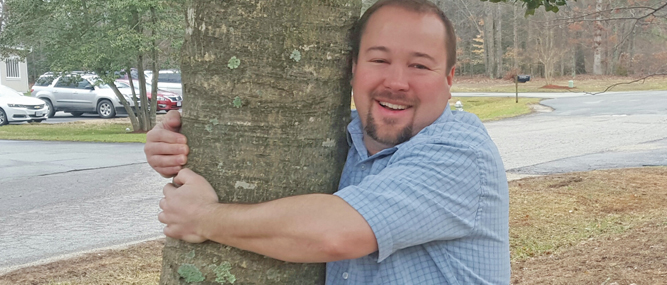Last month my father wrote about the importance of telling our environmental story as an industry and even the possibility of eco certification options. Well his column was almost prophetic because wooden pallets came under attack in February in the state of Oregon.
A last-minute bill involving government purchasing standards was introduced by supporters of corrugated pallets. The legislation, HB 4089, was designed to require Oregon state agencies to purchase corrugated pallets except for specific cases where paper pallets would be too costly, not properly secure the load or cause other problems.
HB 4089 was defeated by industry efforts as the sponsor backed away from passing it in this session in favor of a trial program to explore the concept.
HB 4089 was presented as a way to improve government procurement policies to reduce carbon emissions, truck traffic, workplace injuries and overall supply chain costs. A number of experts testified that the bill would not accomplish these objectives and would instead do considerable harm to the state’s forest products sector and existing business relationships and supply chains.
The National Wooden Pallet & Container Association (NWPCA), the Western Pallet Association (WPA), the American Forest & Paper Association and the Oregon Forest Industries Council, all opposed the measure for different reasons. Concerns raised include the negative impact on secondary wood markets, negative environmental factors, supply chain disruptions, economic loss to the forest products sector, potential to cause more product damage and worker injuries among other issues. Patrick Atagi of the NWPCA worked with consultants and local associations including the WPA to lead the effort against the bill.
The NWPCA stated, “When it became obvious the bill would not pass, the bill’s proponent sought to bypass the legislature with an executive order from the Governor’s office. The last minute maneuver has one state agency, the Oregon Department of Corrections, committing to explore the potential of a pilot project that would seek to have, by 2021, up to 10% of in-bound freight received on cardboard pallets.”
Supporters of the bill point to the fact that many trucks would be taken off the road as a major driver for reduced carbon emissions if suppliers switched to corrugated pallets. Also, they suggested that the lighter weight pallets would result in fewer workplace injuries. An organization called Change the Pallet (www.changethepallet.org), which is connected to corrugate pallet manufacturer Green Ox Pallet Technology, led the charge for HB 4089.
Change the Pallet stated on its website that the organization had sent letters to the governors of all 50 states calling for similar measures to replace wooden pallets with corrugated. It does not appear that any other state has jumped on the issue yet, but Oregon may just be the beginning.
The website includes a video focusing on weight and carbon emissions as a primary reason to change procurement policy for state governments. You can see the video at https://www.youtube.com/watch?v=mSS-jcdNsSE
The recent fight in Oregon demonstrates why the wooden pallet industry needs to come together to work with other wood products sectors to defend the environmental record of wood as a building and packaging material.
I remember what a public relations guru once told me at my first job. He said that you must be out there telling your story because nobody else will do it. The idea is that the media is going to report something. People are going to see advertisements and make up their minds off what they know even if it is faulty information.
The good news is that the wood packaging industry in North America is launching a new initiative to promote the industry and its positive environmental credentials. While sustainability and environmental impact is only one factor in most purchasing decisions, it can be a significant consideration. You can read more on page 38 about the new Nature’s Packaging program developed by the NWPCA, WPA and the Canadian Wooden Pallet & Container Association.
You can get involved by contributing to the fund to support the marketing efforts. You can also use Nature’s Packaging materials in your own promotion and customer communication efforts. The idea is to get as many people talking about the same thing and pointing to credible information to tell our story.
These tools are going to be great. But the full weight of their impact will only be felt when the industry uses them. We have to change inaccurate public perceptions one conversation at a time. The good news is that we have a positive story to tell in the end.




